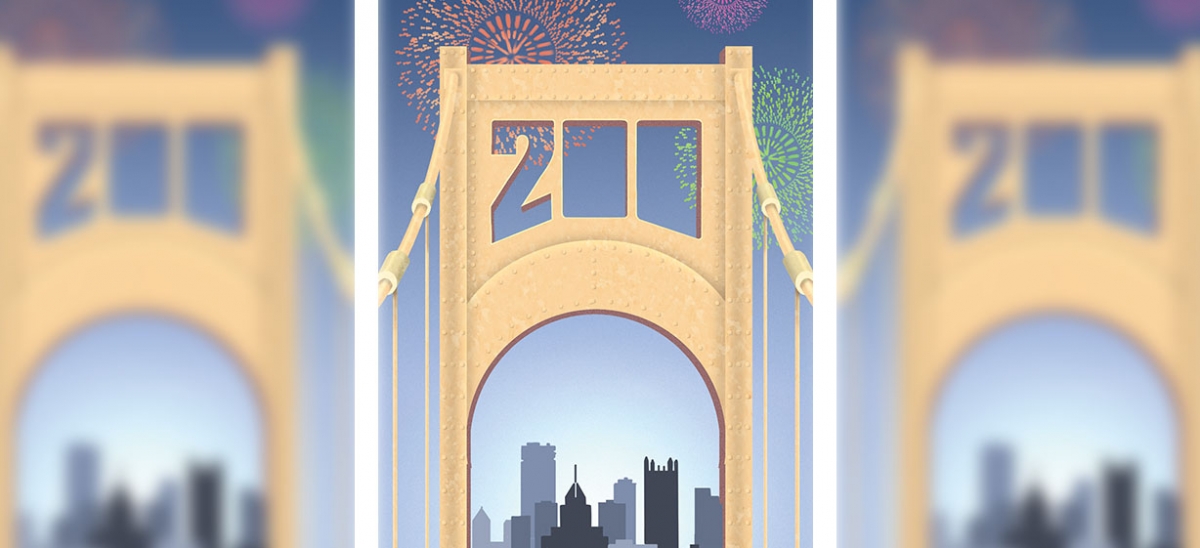
Pittsburgh’s getting younger. you hear it, read about it, and see it any time you’re out on the “tahn.” Even the demographic data back it up. But if you still don’t believe it, consider this: This year—just eight years after the Pittsburgh 250 celebration—the City of Pittsburgh is celebrating its 200th anniversary—proof positive that everything about this place is getting dramatically younger by the year, right?
Not quite. The festivities planned this year are for the bicentennial of the incorporation of Pittsburgh as a city. Even so, it’s certainly something to celebrate.
A century ago, Pittsburgh observed its 100th birthday in monumental fashion, with the construction of the City-County Building.
No such bricks and mortar masterpieces are in store for the bicentennial; instead, the city will take a page from Chairman Mao and “let 100 flowers bloom.” Mayor Bill Peduto commissioned several committees to prepare for the yearlong festivities, which range from a book to school projects, time capsules and parties (see pgh300.com). And while the city’s planning efforts for this anniversary may be suffering a little “birthday fatigue,” reaching 200 years is something only 19 of the nation’s 50 states can claim. So, as John Belushi’s character in “Animal House” famously advised: “Let’s do it!”
But as we’re preparing to pop our corks, here’s something to consider: Some scientists claim that the first person to live to 200 already has been born. So how about considering Pittsburgh’s future even as we celebrate its past?
What might we wish for in our city of the future? For that matter, by 2216, what will remain of the Pittsburgh we now know? The hills and rivers are a good bet, as are the landmark buildings made of stone. The Pirates? Possibly. The newspapers? Uh, no. Beyond that, though, who can guess?
It’s reasonable to hope, however, that if people are still around, they’ll share some of the characteristics that Pittsburghers have had these past 200 years: the capacity to persevere through tough times, the thoughtfulness to care for the other guy, and the ability to envision and create a new future.
Three cheers for “You’re welcome”
As any parent or dog owner has heard 1,000 times, encouragement works better than criticism. So up on the pedestal goes any young person—especially in the service industry—who says “you’re welcome” instead of “no problem.”
How often have you, the customer, been nice enough to thank a waiter or retail attendant for their service, only to receive the answer of “no problem”?
Customers at such establishments are certainly not a problem; they’re keeping the doors open by spending their money. The inference, however, is that they might very well be a problem if it weren’t for the forbearance of their waiter or salesperson. Not only is “no problem” bad for business, it’s bad manners as well as a cheapening of one of the nicest interchanges in human affairs by an infusion of unknowing impertinence.
So, we say thank you to the waitresses and store clerks who answer our simple expressions of thanks with a friendly “you’re welcome.”


